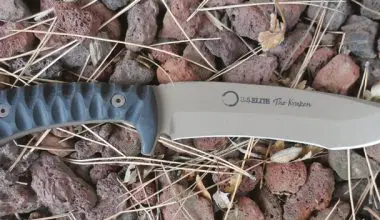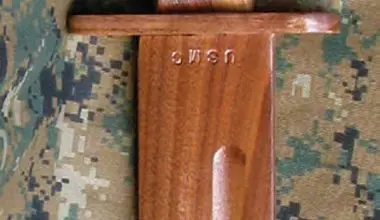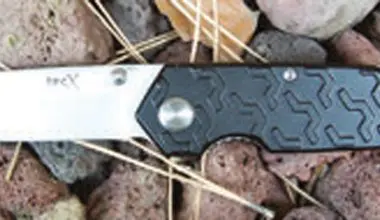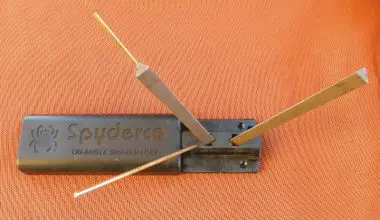WHEN I choose tactical gear, I pay close attention to every detail. I train for the worst, hope for the best, and leave little to chance. Every piece is a carefully weighed compromise.
During more than 30 years of police and industrial security work, I have seen many occasions in which a folding knife was put to use opening boxes, crates, and used in vehicle searches. While a knife makes a poor pry bar, I have on occasion stretched endurance to the limit.
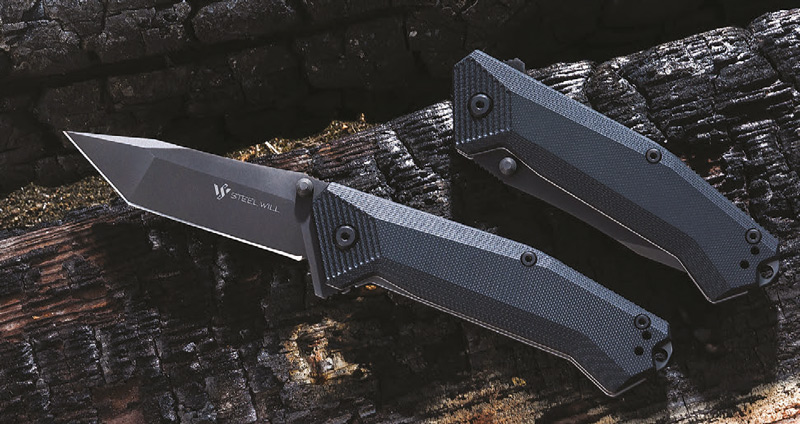
The price needs to be reasonable when compared to other folders. I have strong preferences for blade design. While $50 is maybe too little and $1000 buys an art knife, the median point, around $150, is the start of good quality knives.
Rapid opening is important, as are the ability to deploy the knife quickly and open it one handed. I have no preference on blade locks, but the lock must be robust and pass a stress test. Liner locks, Axis lock and mid-back locks have proven strong in service.
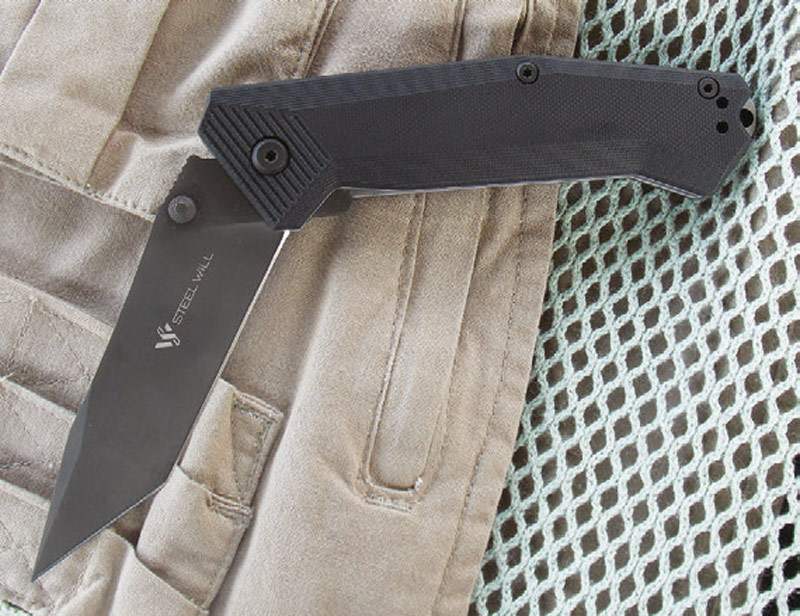
The handle must offer both abrasion and adhesion when the hands are sweaty and the grip is less than perfect. I suffered a cut that required several stitches from losing my grasp on a very sharp knife during a vehicle search. I was upside down in the front seat, under the steering wheel, and I suppose the excitement of finding a hidden cache had something to do with it. But the slick handles of this gentleman’s folder were ill suited to search work in tight quarters.
Control of the knife—either through abrasive handles or the geometry of the knife—is essential. A slasher is great in a defensive situation, but far more likely is the task of cutting rope or a seat belt in a rescue situation. There are many criteria, and I am thankful to be able to look back and consider what has failed in the past and build on that experience. All the knives that have failed have not been inexpensive knives.

I have used a number of Steel Will knives over the past few months and they have given good results in extensive testing. They are not cheap, throwaway knives, but neither are they so expensive their loss would be a hardship.
I like large folders. A shorter blade may not be as effective as a longer one. And very large folders are sometimes unwieldy when used in pocket carry. The size of the Steel Will Onrush is ideal for most uses.
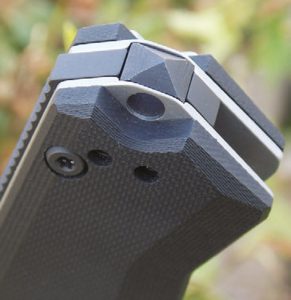
The Onrush is nine inches long open and 5.3 inches closed. The blade is 3.75 inches long. The knife weighs a solid seven ounces. Blade steel is N690Co steel. Although I am not familiar with this steel, research shows it is made by Bohler in Austria and is used in high-quality European knives. On a comparative scale of edge retention and sharpness, this composition compares to 440c.
The blade is finished in a dull black coating. It is etched on the blade with the company name, Onrush, and country of origin (Italy).
The standard knife is the 612. I prefer the Tanto blade of the 622. The Tanto design is true to the original, reinforced near the tip by design, but not as severe a design as many American Tanto types. The point of the blade, leading edge, and cutting edge are all very sharp. The top of the blade near the opening studs has jimping for good purchase when doing close cutting chores.
Open, the pronounced choil acts as a finger guard to prevent stubbing (when the hand runs forward on the blade). If you are cutting and the blade stops short due to resistance or if the blade has become dull, this guard is important. The back of the guard has serrations. Coupled with the jimping on the back of the blade, this makes for excellent control in close work.
An opening stud on either side of the blade offers a point for easy opening. The geometry of the design is such that easy opening is possible. Speed is good even without a flick of the wrist.
The balance of the Onrush is handle heavy, which is good for control. Scales are G10 material. The geometry of the handles is also good for control, and the forward section near the pivot pin is serrated for control in close work. A slight bevel in the scales, both top and bottom, makes for a better feel in the hand. The top of the liner lock is serrated and meets the jimping at the rear of the blade, giving a continuous run of serrations for control in close cutting.
The pocket clip is well designed, offering good retention when clipped in the pocket. Some effort is required to open the clip enough to secure it to the pocket. I like that—the Onrush isn’t going anywhere unless you tug the knife out of the pocket.
The liner lock is strong. I test such locks by first locking the blade open and then rapping the back of the blade hard on a wooden desk.
At the end of the liner are a lanyard hole and glass breaker, the latter a necessity for a tactical knife. There are so many instances today of officers rescuing children from hot vehicles that this idiocy seems a daily event.
The Onrush is supplied with a nylon pouch compatible with MOLLE gear. This well-designed pouch is secure and offers a good home for the Onrush for uniform use. However, since I no longer wear a uniform, I carry my personal Onrush in pocket carry.
After weeks of use, I can affirm that the Steel Will Onrush makes the grade. The Physical Vapor Disposition coating seems durable, the pivot pin is still tight, and the blade is sharp. Having used it in tactical drills and practice, I found the knife well balanced with good retention. Ninety percent of cutting chores with this knife have been mundane, and it does the business well. The Onrush gets a solid recommendation. Suggested retail price is $199.99.

